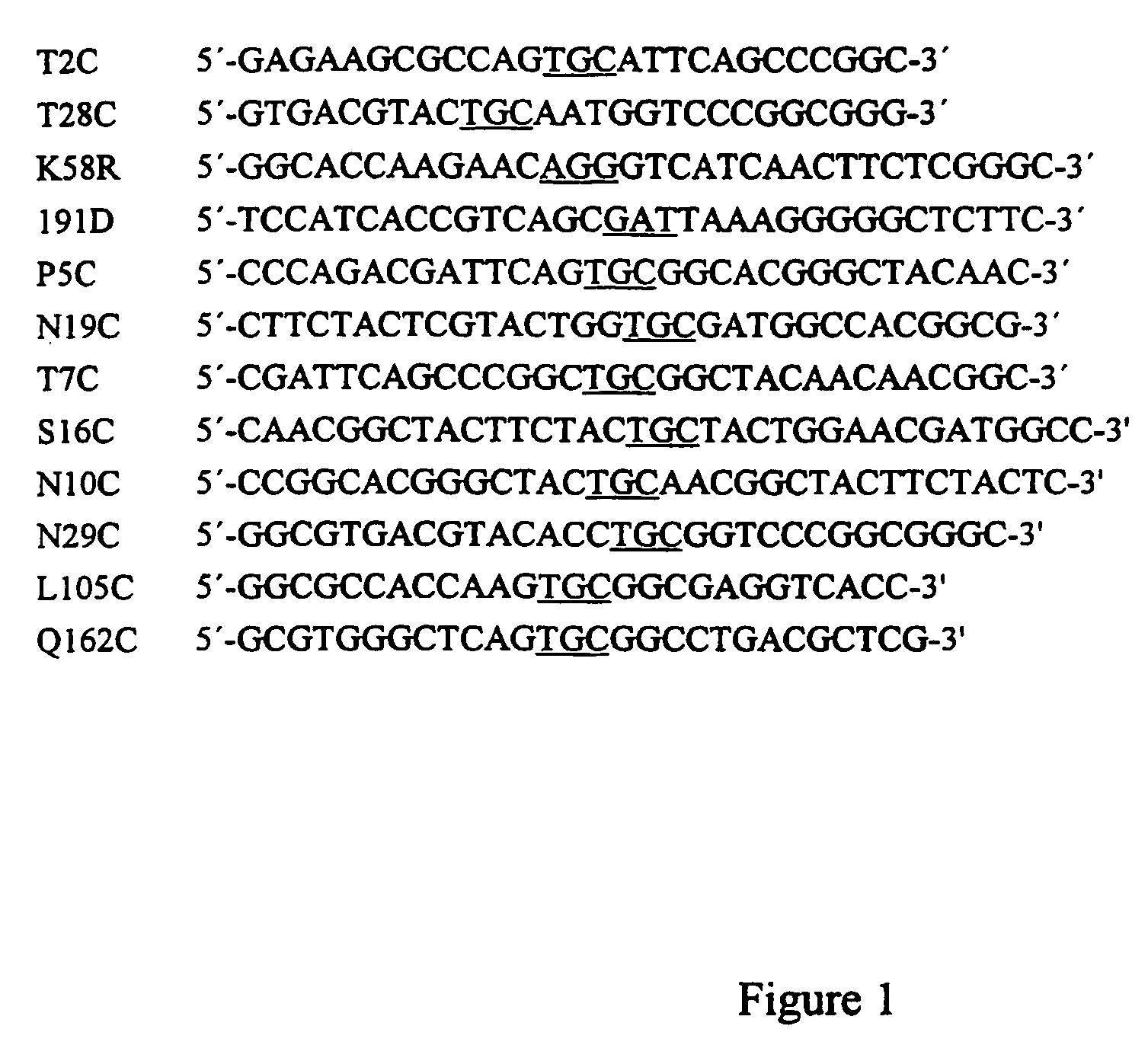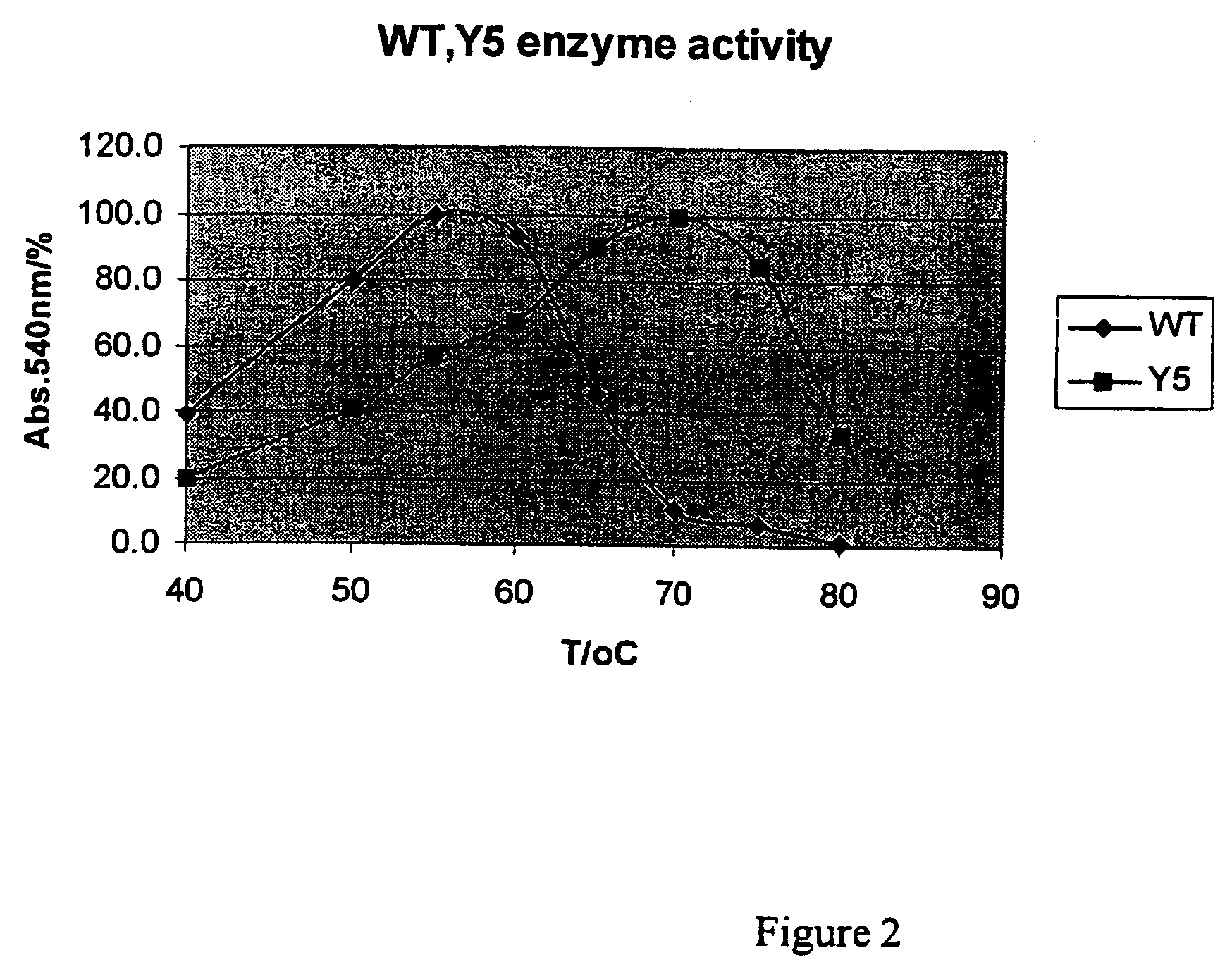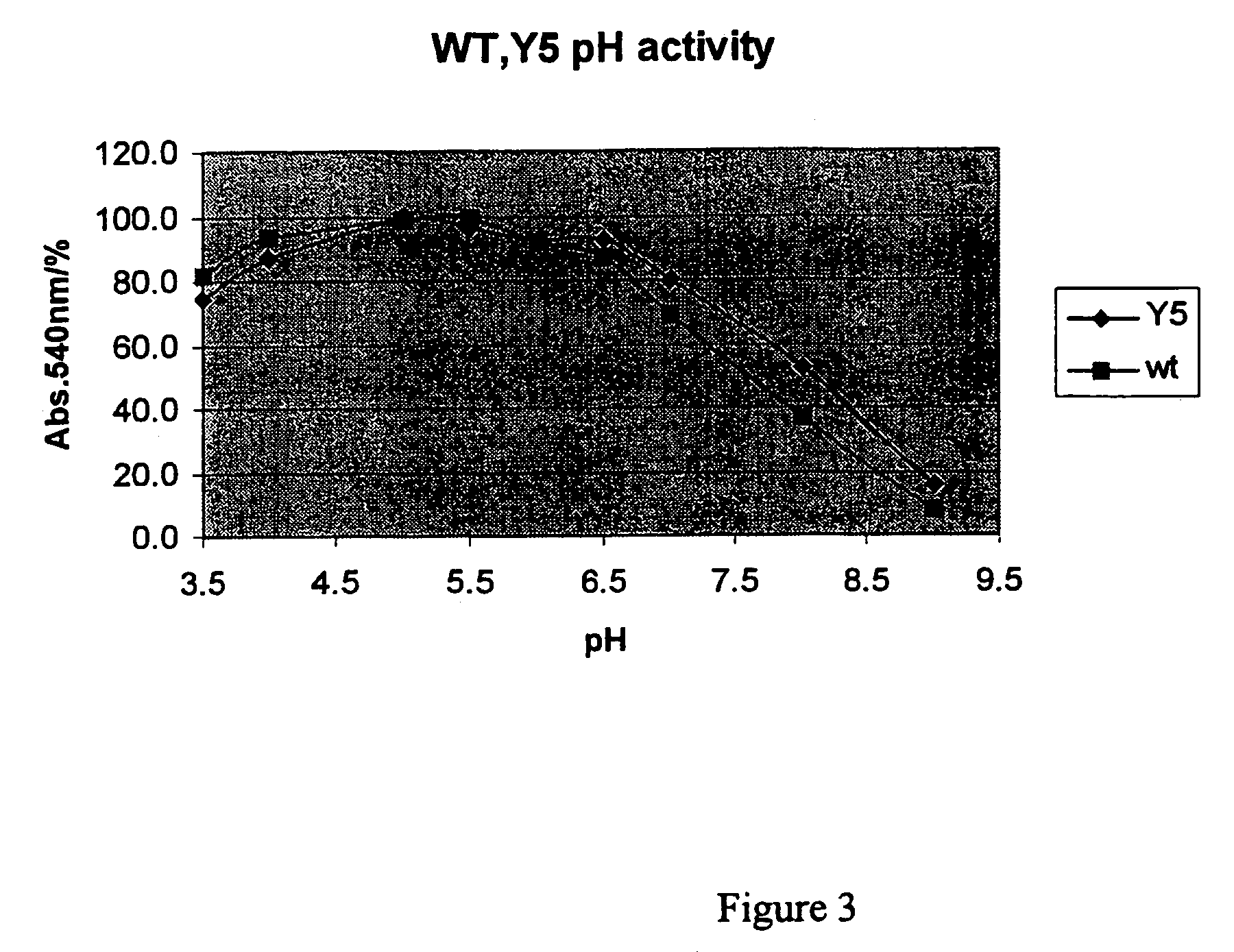Trichoderma reesei G/11 xylanases with improved stability
a technology of trichoderma reesei and stability, applied in the field of protein engineering, can solve the problems of increasing costs, reducing the effective utility of the presently available xylanases in industrial applications, and none of the commercially available xylanases survives these conditions, so as to improve the stability of xylanase and the stability of the enzym
- Summary
- Abstract
- Description
- Claims
- Application Information
AI Technical Summary
Benefits of technology
Problems solved by technology
Method used
Image
Examples
examples of mutations
Example 1
[0037]The three-fold mutations (T2C, T28C and K58R) and the recombinant change (+191D) were made in T. reesei XynII by using the methods described above. The mutant enzyme was designated as Y5. Said mutant enzyme was expressed in E. coli, which was cultivated at +37° C. in shake flasks using Luria Broth as growth medium. After cultivation the cells were removed by centrifugation and the xylanase secreted into the medium was characterized in varying conditions, as described above. FIG. 2 shows the effect of the temperature to the enzyme activity when the mutant Y5 (T2C, T28C, K58R, +191D) and the wild-type (T. reesei XynII) enzyme were incubated for 10 min with birchwood xylan in varying temperatures, and the relative amount of the reducing sugars as released were measured with DNS-method. Said mutations improved the temperature optimum of xylanase by about 15° C.
example 2
[0038]The three-fold mutant xylanase (T2C, T28C, K58R, +191D) described in Example 1 was incubated for 10 min in 1% birchwood xylan at 50° C. in citrate-phosphate buffer in varying pH-values. FIG. 3 shows the relative amount of reducing sugars as released for the mutant and the wild-type xylanases. The mutations broadened slightly the pH-dependent activity of the enzyme to alkaline direction. The mutant enzyme was more active than the wild-type enzyme at pH 7-8; the activity of mutant enzyme was about 20% higher at pH 8 (50° C.).
example 3
[0039]The above-mentioned three-fold mutant (T2C, T28C, K58R, +191D) and the wild-type enzyme were incubated for 10 min at varying temperatures. After the incubation the samples were cooled and the residual activity was determined in standard conditions. The wild-type enzyme was completely inactivated already at 55-60° C. The mutant enzyme retained about 50% of its activity even at 65° C. (FIG. 4). Table 1 below shows the half-lives (T1 / 2) of the mutant (Y5) and the wild-type xylanase at 55° C. and 65° C.
[0040]
TABLE 1pH5pH855° C.Y5stablestableWild-type XynII~5 min~2 min65° C.Y520-25 min~10 minWild-type XynII40 sec
PUM
| Property | Measurement | Unit |
|---|---|---|
| Acidity | aaaaa | aaaaa |
| Stability | aaaaa | aaaaa |
Abstract
Description
Claims
Application Information
 Login to View More
Login to View More - R&D
- Intellectual Property
- Life Sciences
- Materials
- Tech Scout
- Unparalleled Data Quality
- Higher Quality Content
- 60% Fewer Hallucinations
Browse by: Latest US Patents, China's latest patents, Technical Efficacy Thesaurus, Application Domain, Technology Topic, Popular Technical Reports.
© 2025 PatSnap. All rights reserved.Legal|Privacy policy|Modern Slavery Act Transparency Statement|Sitemap|About US| Contact US: help@patsnap.com



